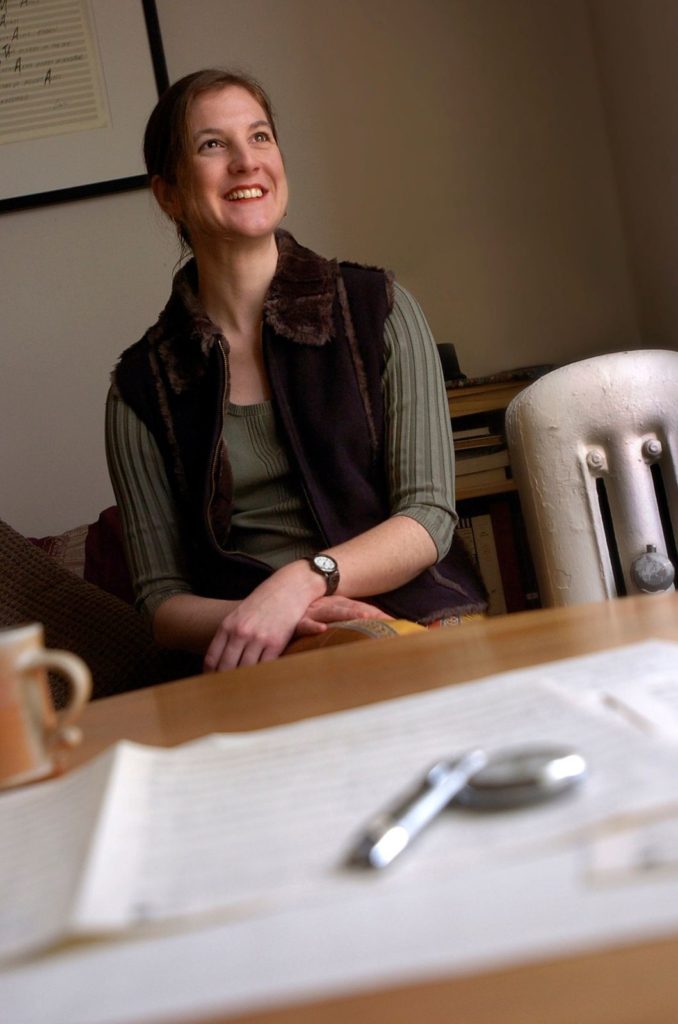
Missa Primavera (2020)
from the composer
The premise of The Primavera Project was to commission a series of short solo cello works as companion pieces to painter Charline von Heyl’s “reimagining” of a famously enigmatic painting by Renaissance painter Botticelli, Primavera. This invitation presented a particular challenge, which was to respond to an artwork that was already a response to another artwork. After trying a few triangulations of signification in my head to no avail, I finally found the way forward by “rectangulating”: bringing in yet another artwork, Renaissance composer Josquin dez Pres’s Missa Hercules Dux Ferrariae, itself full of layered meanings. This work has special significance for me, since in my other musical life as an early music soprano, I performed and recorded the Missa Hercules Dux Ferrariae with the acclaimed vocal ensemble Pomerium. Both Botticelli and Josquin were able to create luminously beautiful works that also, within their construction, celebrated wildly complex networks of cryptic meanings that art historians and musicologists, respectively, have been decoding with glee ever since. Singing Josquin is like being inside a superbly illustrated fantasy novel, full of color and magic and symbolism.
I leaned into the surplus signification and symbolism inherent in the project itself. Josquin, composing in Italy around the same time as Botticelli’s heyday, created his cantus firmus (the core melody that underpins the structure of the composition) by matching the actual vowel sounds of the name of his benefactor (Hercules, the Duke of Ferrara) to the corresponding vowel sounds of the solfège syllables: Re (Her-) Ut (cu-) Re (les) Ut (Dux) Re (Fer-) Fa (ra-) Mi (ri-) Re (e). I followed suit and generated my own cantus firmus, also gleaned from the name of the commissioner (and, coincidentally, with the painting): Mi (Pri-) Fa (ma-) Re (ve-) La (ra). With this underpinning in place, I was able to explore and reimagine many other features of Josquin’s masterwork, as von Heyl has done with the Botticelli masterwork. She has, for example, taken patterns from figures’ clothing and created foregrounded objects from them; I took ornamental passages of the Josquin – aspects of the antecedent work that seem to function primarily as texture – and expanded them into foregrounded sound objects. In this way I could bring some of my own favorite, fleeting details of the piece into high relief, always celebrating Matt Haimovitz’s warmth and passion as a soloist, and his joyful curiosity as a fellow thinker.
bio
Composer, producer, and vocalist Lisa Bielawa is a Rome Prize winner in Musical Composition and takes inspiration for her work from literary sources and close artistic collaborations. Her music has been described as “ruminative, pointillistic and harmonically slightly tart,” by The New York Times. She is the recipient of the 2017 Music Award from the American Academy of Arts & Letters and a 2020 Discovery Grant from OPERA America’s Opera Grants for Female Composers. She was named a William Randolph Hearst Visiting Artist Fellow at the American Antiquarian Society for 2018 and is Artist-in-Residence at Kaufman Music Center in New York for the 2020-2021 season.
Bielawa consistently executes work that incorporates community-making as part of her artistic vision. She has created music for public spaces in Lower Manhattan, the banks of the Tiber River in Rome, on the sites of former airfields in Berlin in San Francisco, to mark the 30th anniversary of the fall of the Berlin Wall, and virtually during the coronavirus lockdown using submitted testimonies and recorded voices from six continents.
Bielawa began touring as the vocalist with the Philip Glass Ensemble in 1992 and in 1997 she co-founded the MATA Festival, which celebrates the work of young composers. She received a 2018 Los Angeles Area Emmy nomination for her unprecedented, made-for-TV-and-online opera Vireo: The Spiritual Biography of a Witch’s Accuser, created with librettist Erik Ehn and director Charles Otte. Vireo was filmed in twelve parts in locations across the country and features over 350 musicians.
